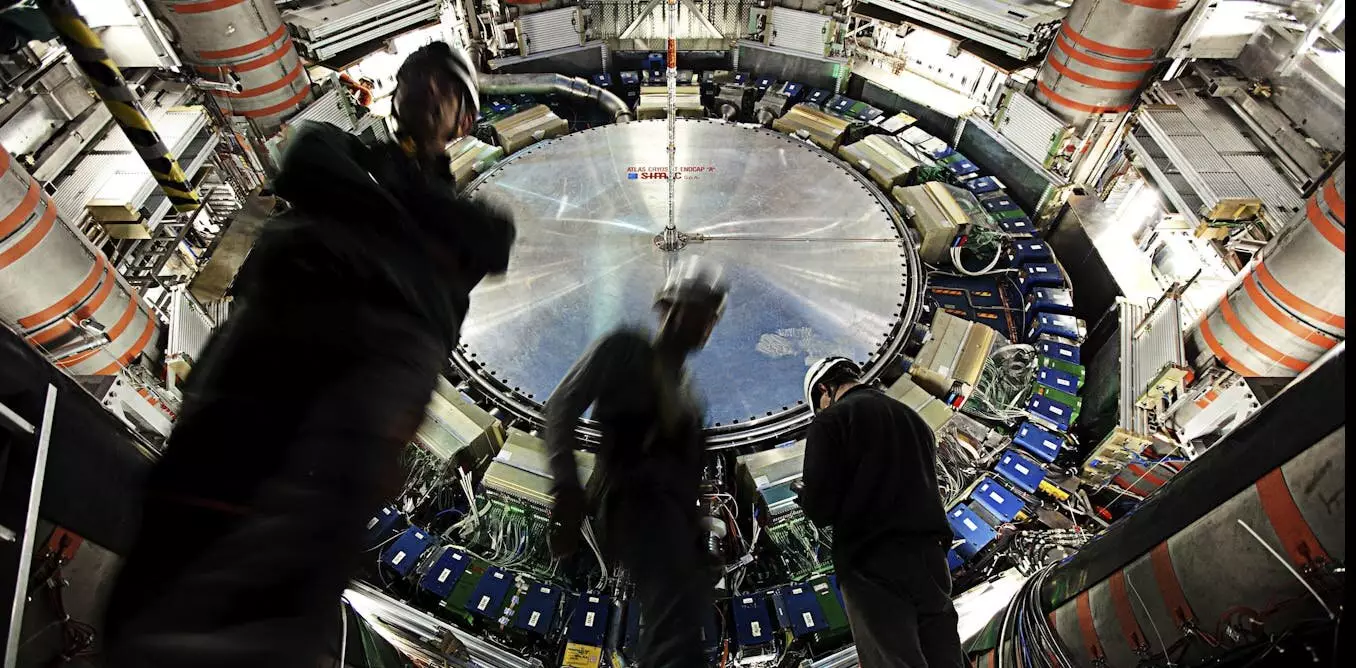Quantum entanglement, a term often shrouded in mystery, represents one of the most astonishing phenomena of quantum physics. Entanglement suggests that two particles can become intertwined in such a way that the state of one particle is intrinsically linked to the state of another, irrespective of the distance separating them. At the quantum level, where the rules of classical physics break down, this means that information can be transferred between entangled particles instantaneously, defying our intuitive notions of separateness and connection. However, this does not allow for faster-than-light communication, a common misconception in popular culture and science fiction narratives.
Recent advances have highlighted entanglement in new domains. While past experiments primarily involved photons and atoms, a groundbreaking study conducted at the Large Hadron Collider (LHC) in Geneva has unveiled entanglement in pairs of top quarks, the heavyweight champions of subatomic particles. This discovery, elucidated in a paper by the ATLAS collaboration, represents a significant leap in our comprehension of quantum behavior at high energy levels.
The phenomenon of entanglement was first experimentally verified in the early 1980s, primarily with photons. Over the decades, scientists have harnessed this knowledge to develop technologies that can utilize entangled states. For instance, entangled photons are now commercially available, enabling applications in fields such as quantum cryptography and quantum computing—technologies that promise to revolutionize information processing.
However, the newfound observation of entanglement with top quarks introduces a different dimension to this research. Traditionally, entanglement manifesting under low energy conditions was prevalent in laboratory settings. The ability to study entanglement amidst the incredibly high energy densities found in particles such as top quarks could offer fresh insights into fundamental questions in physics.
Top quarks hold a unique position in the Standard Model of particle physics. As the heaviest of all known quarks—184 times the mass of a proton—they present an enigma that physicists are eager to unravel. After the discovery of the top quark in 1995, research has consistently hinted at the possibility of undiscovered physics lurking within its properties. Its substantial mass might suggest interaction with new forces or particles yet to be defined in theoretical physics.
Analyzing the behavior of top quarks could potentially bridge gaps in our current understanding of the universe’s fabric. This quark’s urgent call for investigation extends beyond mere curiosity; it highlights the inadequacies of existing theories and the potential for groundbreaking revelations. Furthermore, probing the entangled states of top quarks may provide a testing ground for theoretical frameworks predicting new physics.
While the findings from the ATLAS experiment are exhilarating, researchers face the challenge of utilizing entanglement effectively in their studies. Entanglement is an inherently delicate state, easily disturbed by environmental factors. This fragility necessitates ultra-cold conditions or carefully controlled environments to maintain the entangled state long enough for measurement and analysis. The intrinsic complexity of working with high-mass, high-energy particles like top quarks also increases the difficulty of maintaining these delicate conditions.
Moreover, it is essential to recognize that, although the physics community celebrates these findings, they do not herald an immediate technological breakthrough. Top quarks, despite their potential, are not likely to lead to technologies we can readily apply or develop. The LHC, a massive and intricate machine, operates on a scale that is not portable, limiting the practical applications of the top quarks we study.
Despite the limitations, the research surrounding entangled top quarks continues to illuminate the universe’s underlying mechanisms. Furthermore, the continued investigation of quantum phenomena is paving the way for a deeper understanding of reality itself. The intersection of high-energy particle physics and quantum mechanics promises to yield insights that transcend established theories and might even redefine our comprehension of space, time, and matter.
The exploration of quantum entanglement—especially in the more extreme domains of particle physics—ushers in a new era of discovery. Each new finding propels us closer to answering profound questions about the universe and may help identify the elusive threads connecting established physics with untapped realms of knowledge. As we embark on this journey of exploration, the saga of quantum entanglement will undoubtedly enrich our understanding of the cosmos.


Leave a Reply